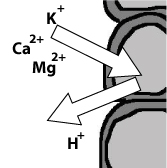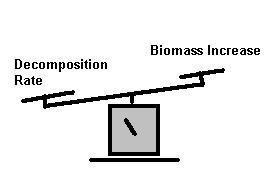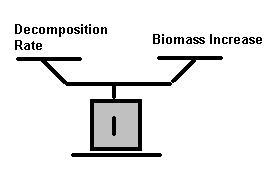|
What is a bog? Bogs are one amongst many types of wetlands. Wetlands is a type of ecosystem that is partly land and partly water. As such, they have the highest diversity of life among terrestrial ecosystems. That's right, there are more species per area living in wetlands than in a stand of old-growth forest. A wetland can be described as a "transition between land and water". Poor drainage is a condition common to all wetlands. Their abundance of water encourages the growth of plants that are adapted to waterlogged conditions. Plant communities in wetlands are different from those in other environments. Many creatures, especially birds, use wetlands as their habitats. The waterlogged conditions of wetlands alter the characteristics of soils as well. The hydrology, soils, wildlife, and plants interact with one another, making wetlands unique and irreplaceable ecosystems. Any ecosystem that is waterlogged during at least part of the year qualifies as a "wetland". Within this broad category of ecosystems, vast differences exist. To distinguish different wetlands, we must learn how to classify them. There are many wetland classification schemes. In this chapter, we will introduce two of them: the Canadian Wetland Classification System, and the U.S. Fish and Wildlife Servicesí Classification Scheme.
A summary of various wetland classification systems: |
|||
|
|
|
|
|
A bog environment Bogs have a lot of water, very few minerals, and very little of nutrients. These conditions are favourable to Sphagnum moss. Sphagnum can survive under water and with a tiny amount of minerals, where most other plants would die. Sphagnum, however, does have a way of obtaining the minerals it needs. Some minerals needed for growth are found in the environment as small quantities of dissolved ions. These ions include calcium (Ca2+), sodium (Na+), potassium (K+) and magnesium (Mg2+). In order to get the minerals needed for growth, the cells of Sphagnum moss preferentially exchange ions with the environment. The mossís hydrogen ions (H+) are exchanged with the ions mentioned above on the cell wall of Sphagnum. Because positive ions are called cations, this process is known as cation exchange. The product of this exchange, hydrogen ions, dissolves in water and makes the water acidic. This acid, combined with the naturally mineral-poor conditions of the bog, further inhibits the growth of non-bog plants
|
|||
| Cation exchange on the cell wall of Sphagnum moss. Hydrogen ions, when dissolved in water, form acid. The acidic environment of a bog is partly due to this process. |
|
||
|
In addition to the elimination of other plants, the growth of microorganisms is also affected. Microorganisms such as bacteria live in most soils of the world. Their job is to break down dead plants and animals into nutrients. The process of breaking down plant and animal remains is called decomposition. Decomposition returns dead plant and animal matter to the environment. This process prevents dead organic matter from staying indefinitely in an environment. In acidic and waterlogged environments such as bogs though, bacteria capable of decomposition do not decompose as actively as in other ecosystems. This results in a decomposition rate that is slower than the production of plant matter. Organic matter, including plant material, is also known as biomass. Although most of the biomass produced in bogs does in fact decompose, there is a significant amount that accumulates year after year. Over a long period of time, the thickness of the peat increases and a peatland is formed. Because Sphagnum moss makes bogs more acidic and thus inhibits decomposition, peat is usually considerably thicker than in other wetlands.
|
|||
|
When decomposition of dead organic matter is slower than the growth of plants, peat accumulates |
When decomposition of dead organic matter occurs at the same rate as the growth of plants, peat does not form. |
||
|
Geographical locations of bogs There are many bogs in Northern Canada. They are particularly numerous in the southern, sub-arctic part of the Canadian Shield region surrounding Hudson Bay and James Bay. Outside the Canadian Shield, bogs are usually smaller in size, and are sparse. Bogs near major population centres have been severely disturbed by draining and peat harvesting. Bogs are uncommon in the prairies, inside the Arctic Circle, and in British Columbia. In British Columbia, bogs occur only in three small and separate clusters. They are located on the north coast, the extreme west coast of Vancouver Island, and the Fraser Delta. In terms of vegetation, each cluster is different from the other. The bogs on the north coast have many Nordic plants that are rare in the bogs on Vancouver Island, and are absent in the bogs in the Fraser Delta.
|
|||


